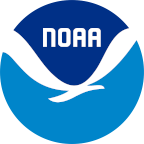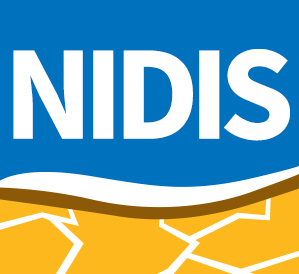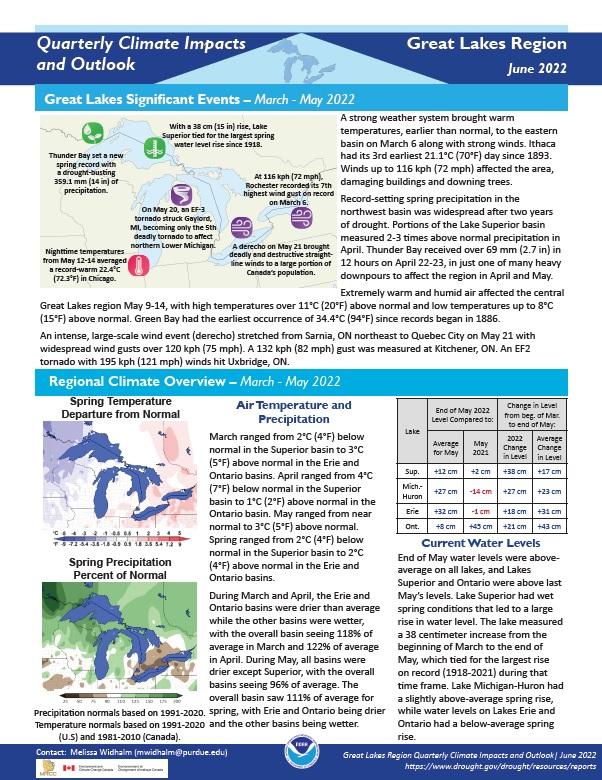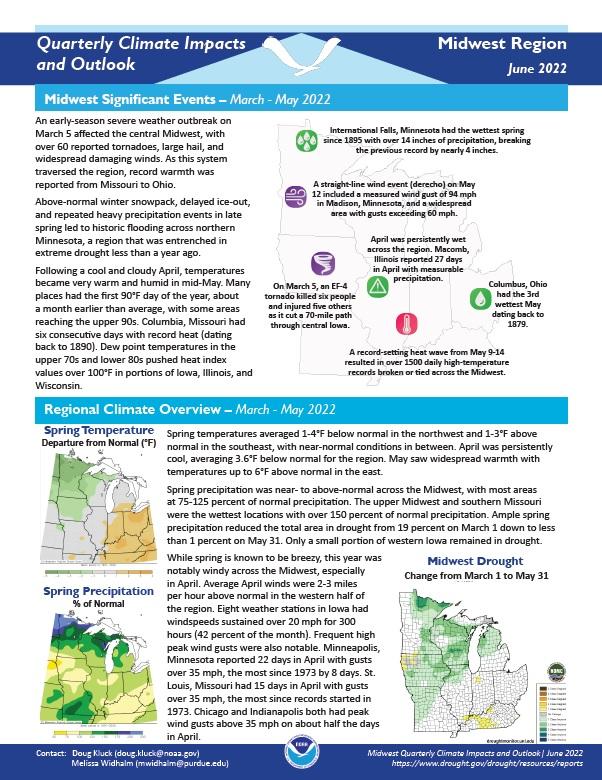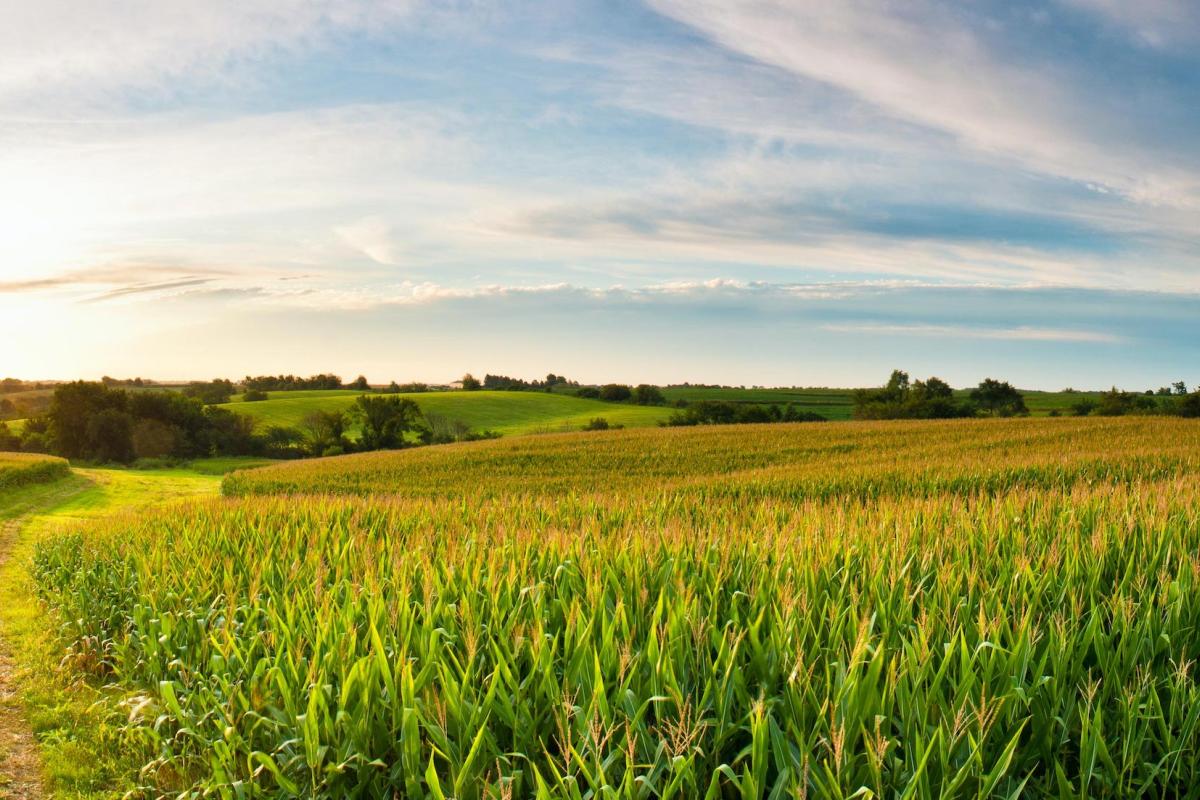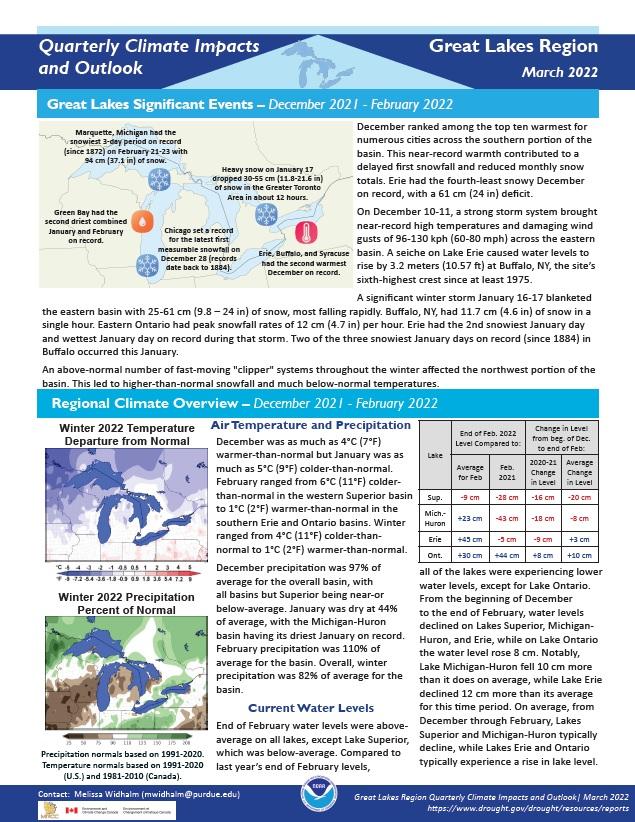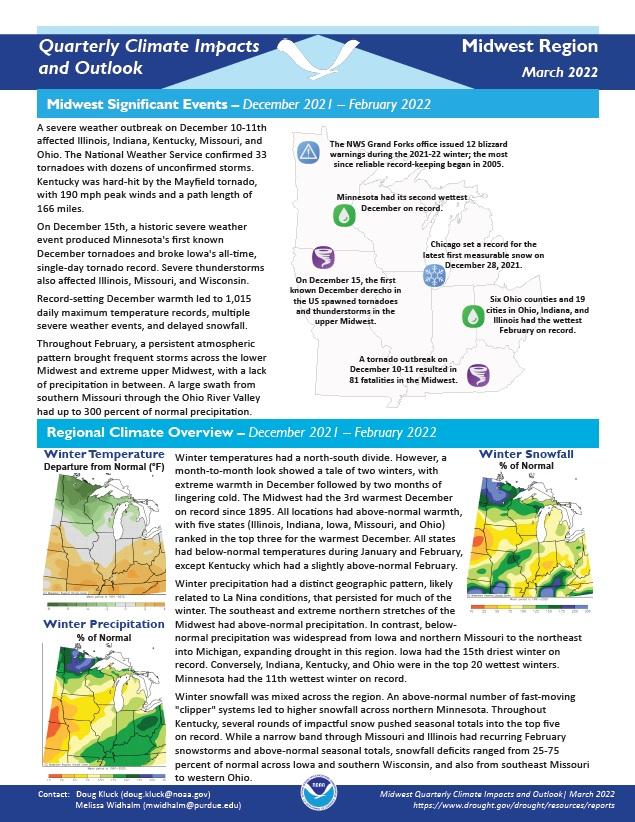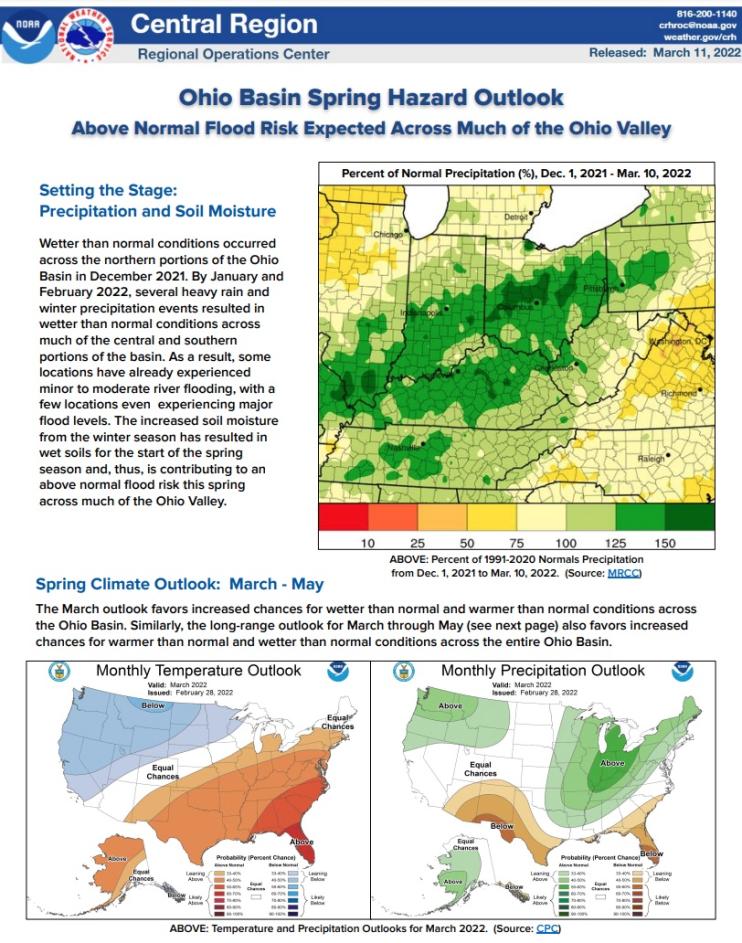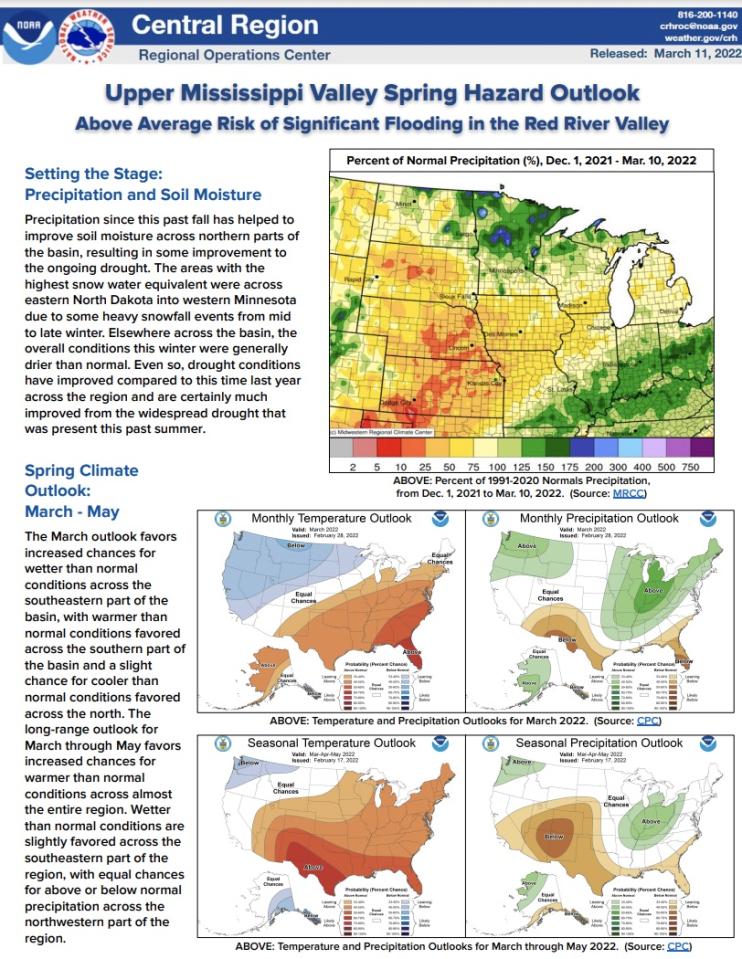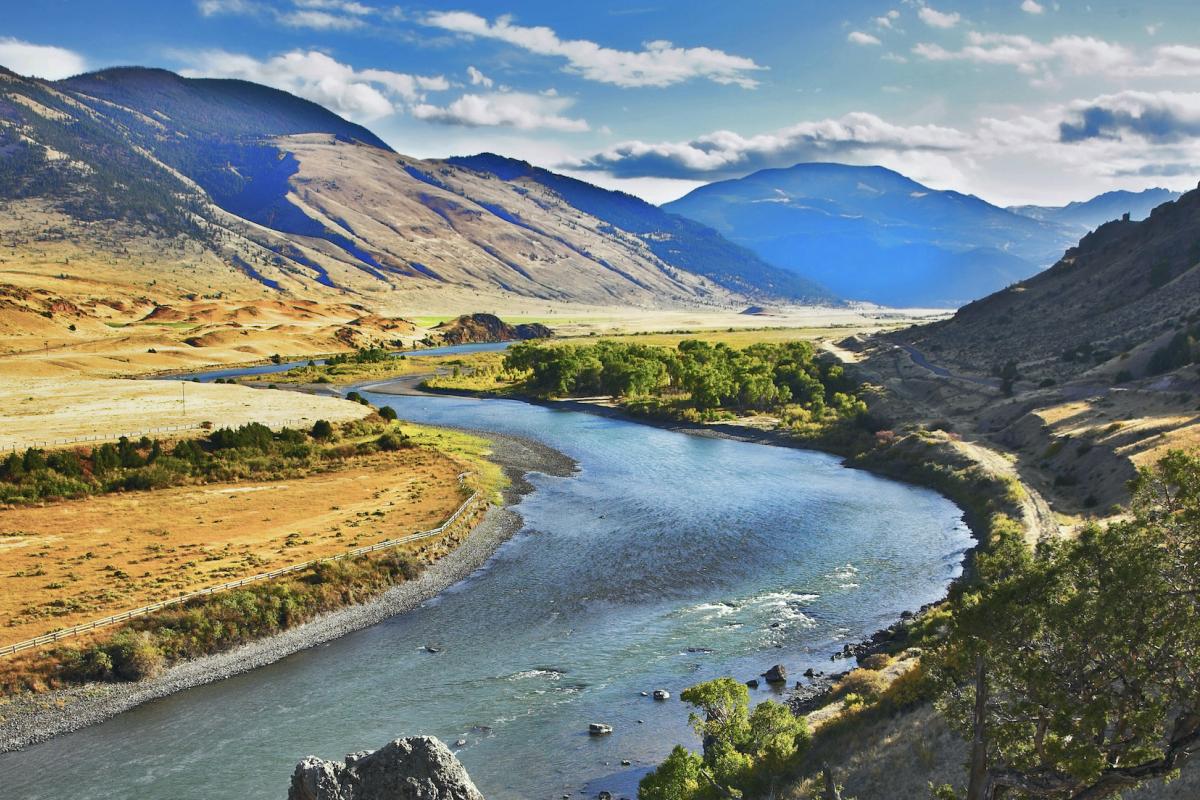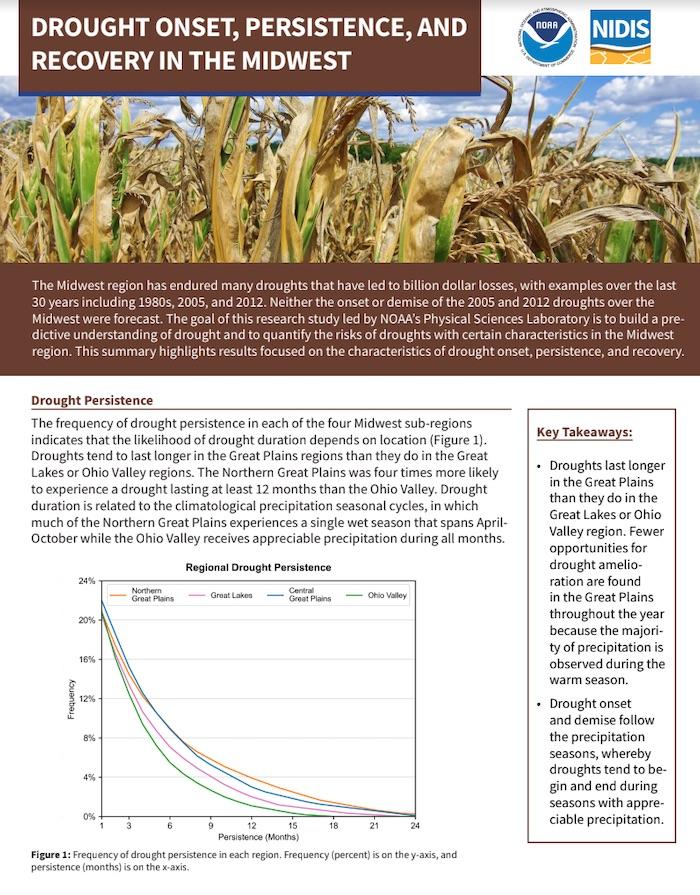For the latest forecasts and critical weather information, visit weather.gov.
Quarterly Climate Impacts and Outlook for the Great Lakes Region for March–May 2022. Dated June 2022.
Spring ranged from 2°C (4°F) below normal in the Superior basin to 2°C (4°F) above normal in the Erie and Ontario basins. The overall basin saw 111% of average precipitation for spring, with Erie and Ontario being drier and the other basins being wetter.
Quarterly Climate Impacts and Outlook for the Midwest Region for March–May 2022. Dated June 2022.
Spring precipitation was near- to above-normal across the Midwest, with most areas at 75%–125% of normal precipitation. The upper Midwest and southern Missouri were the wettest locations with over 150% of normal precipitation. Spring temperatures averaged 1–4°F below normal in the northwest and 1–3°F above normal in the southeast, with near-normal conditions in between.
Quarterly Climate Impacts and Outlook for the Great Lakes Region for December 2021 - February 2022. Dated March 2022.
Winter temperatures ranged from 4°C (11°F) colder-than-normal to 1°C (2°F) warmer-than-normal. Overall, winter precipitation was 82% of average for the basin.
Quarterly Climate Impacts and Outlook for the Midwest Region for December 2021 - February 2022. Dated March 2022.
The National Weather Service developed 2022 Spring Hazard Outlooks in coordination with NOAA's National Centers for Environmental Information (NCEI) and National Integrated Drought Information System (NIDIS); High Plains Regional Climate Center; Midwestern Regional Climate Center; U.S. Department of Agriculture; and National Interagency Fire Centers' Geographic Area Coordination Centers. This outlook highlights the various spring hazards that could occur and potential impacts across the Ohio River Valley.
The National Weather Service Central Region developed 2022 Spring Hazard Outlooks in coordination with NOAA's National Centers for Environmental Information and National Integrated Drought Information System (NIDIS); U.S. Department of Agriculture; High Plains Regional Climate Center; Midwestern Regional Climate Center; and National Interagency Fire Center's Geographic Area Coordination Centers. This outlook highlights the various spring hazards that could occur and potential impacts across the Upper Mississippi Valley.
The Midwest region has endured many droughts that have led to billion dollar losses, with examples over the last 30 years including 1980s, 2005, and 2012. Neither the onset or demise of the 2005 and 2012 droughts over the Midwest were forecast. The goal of this NIDIS-funded research study led by NOAA’s Physical Sciences Laboratory is to build a predictive understanding of drought and to quantify the risks of droughts with certain characteristics in the Midwest region.
